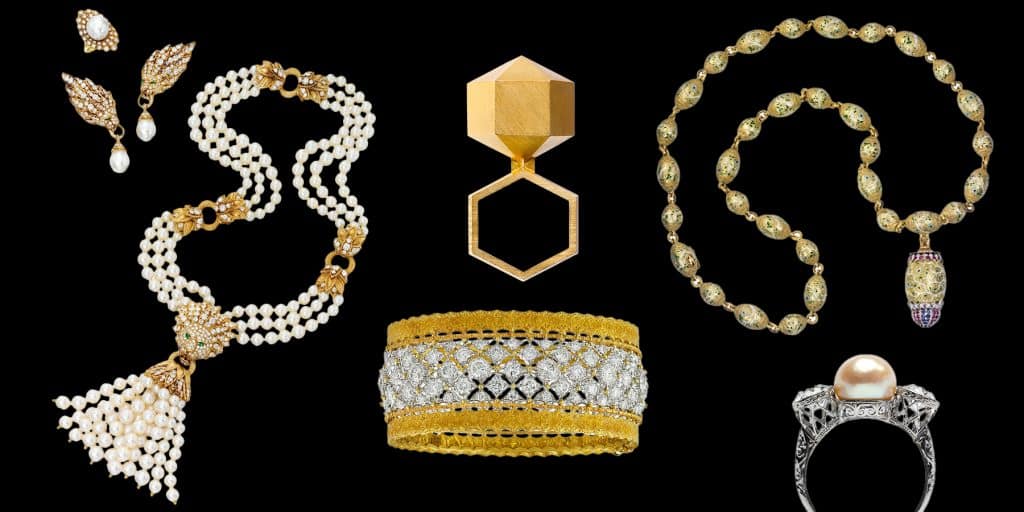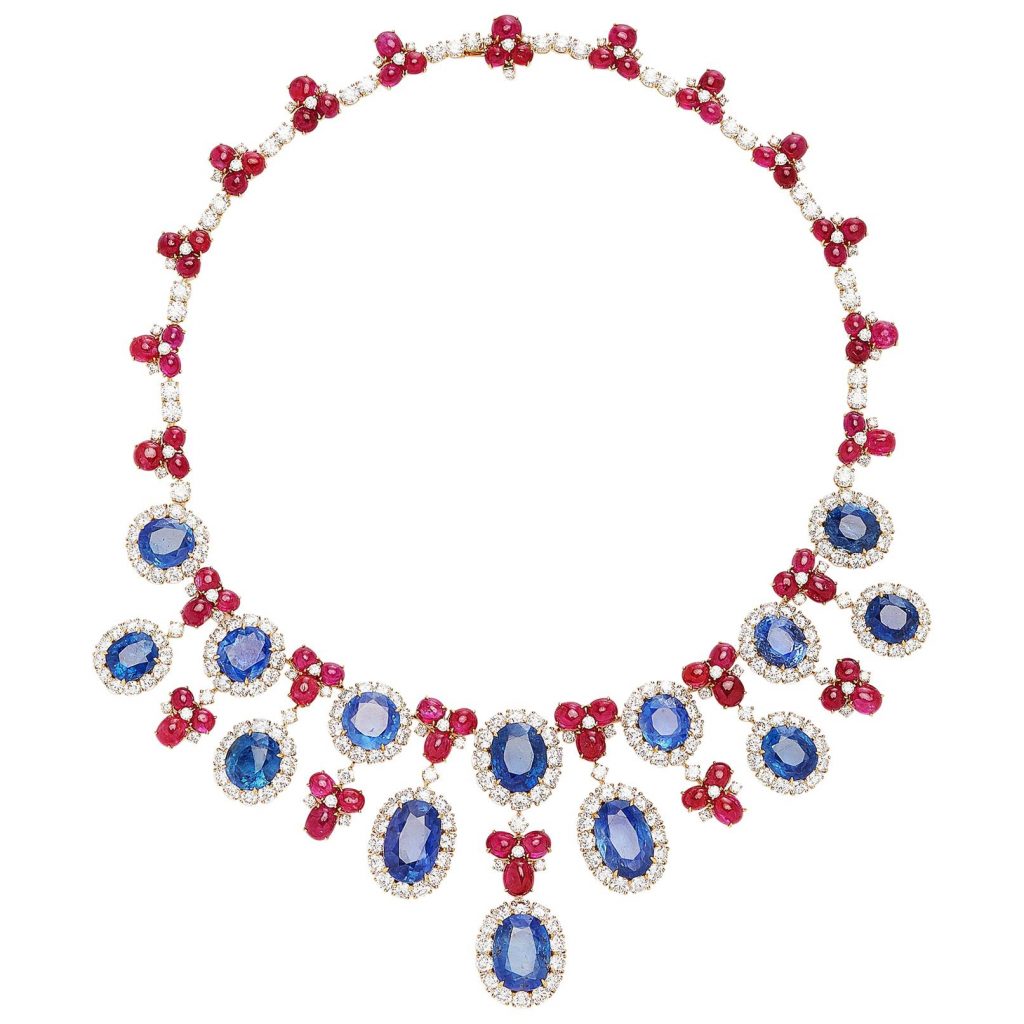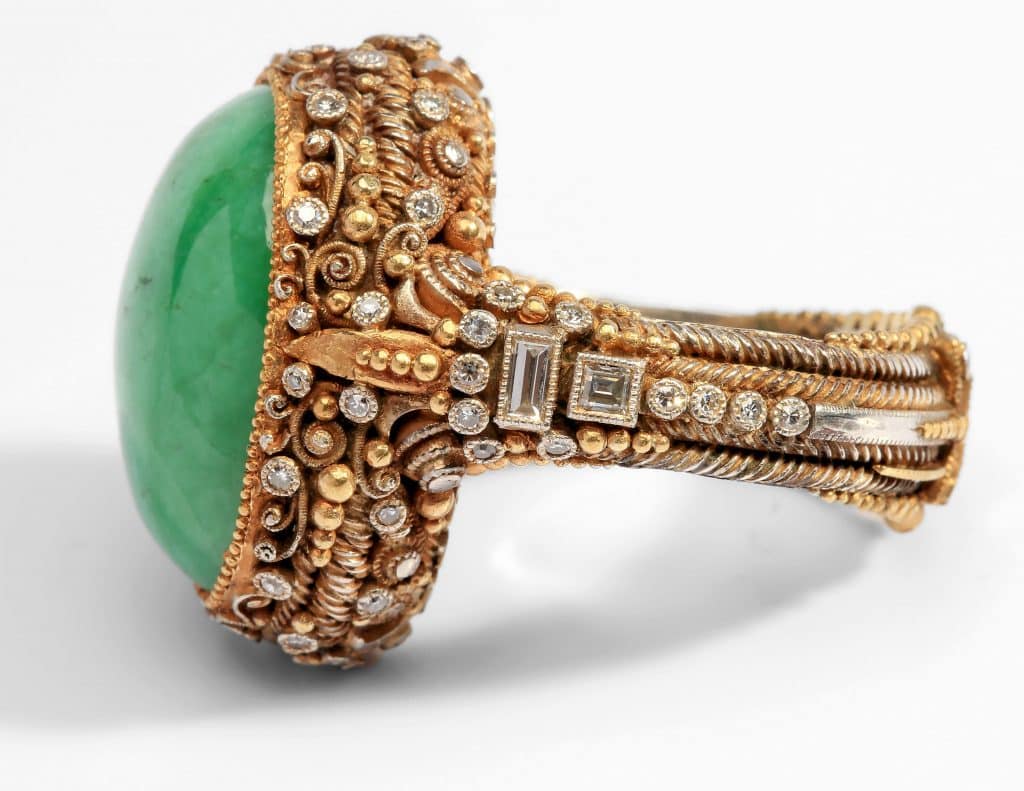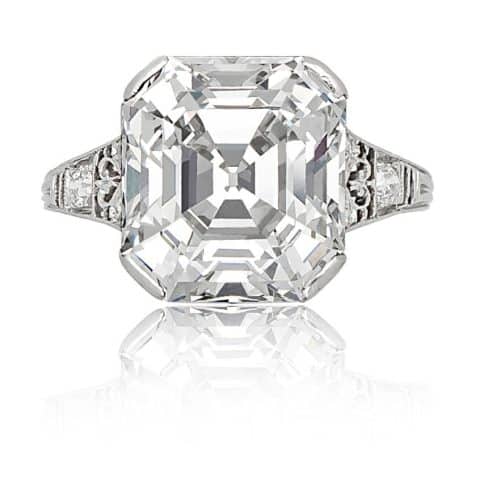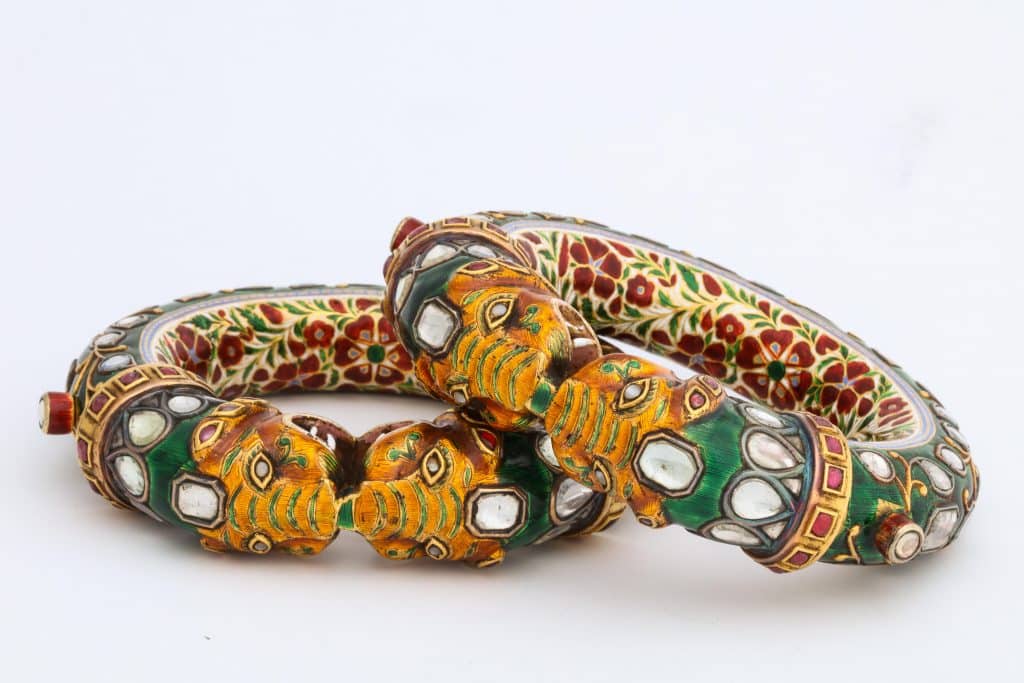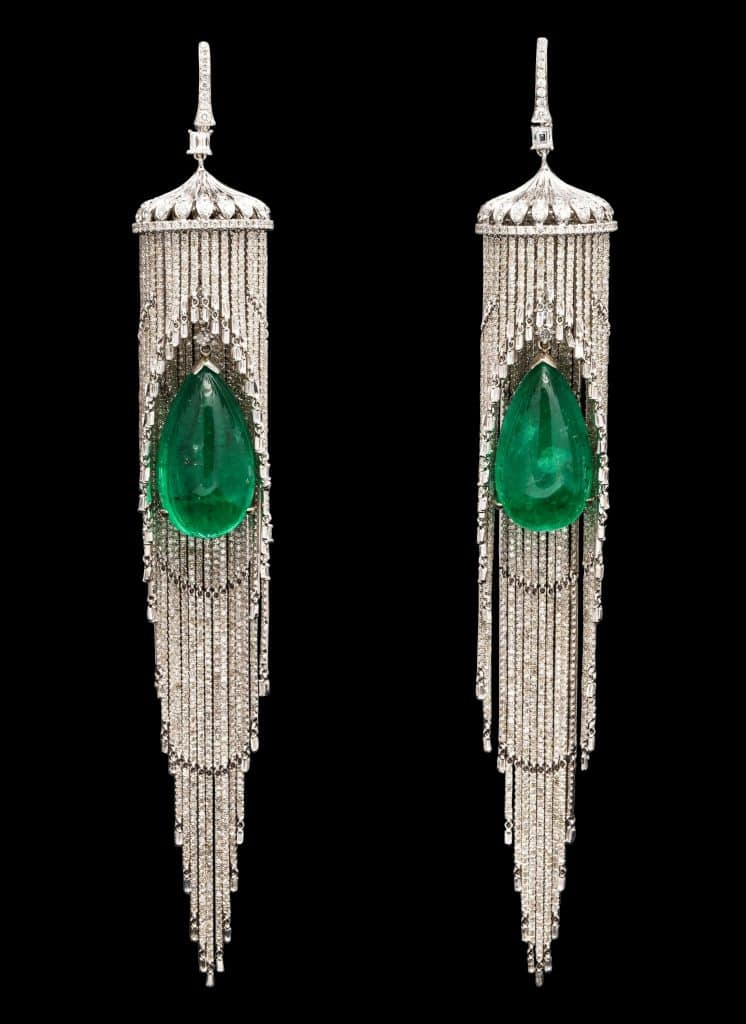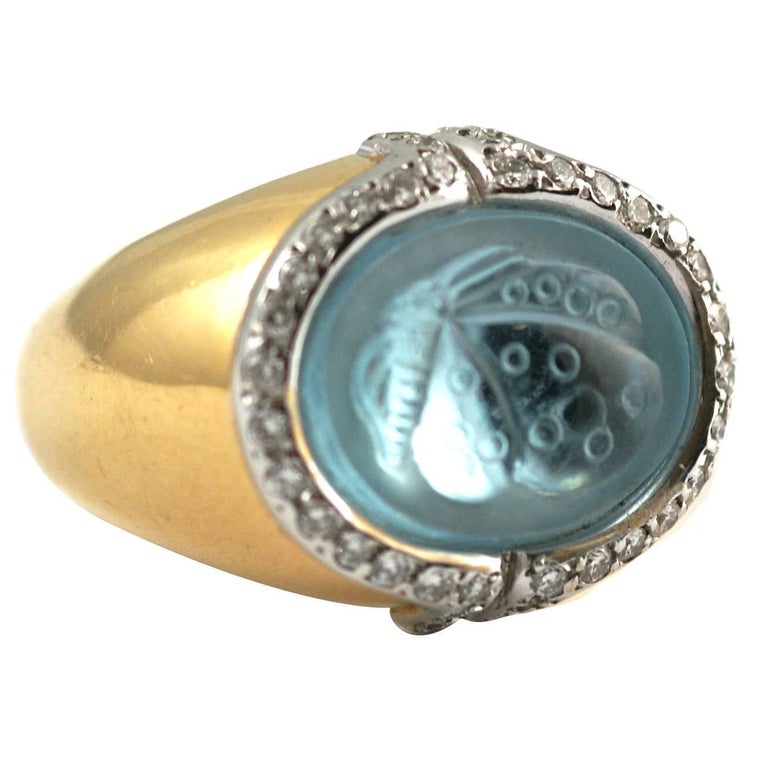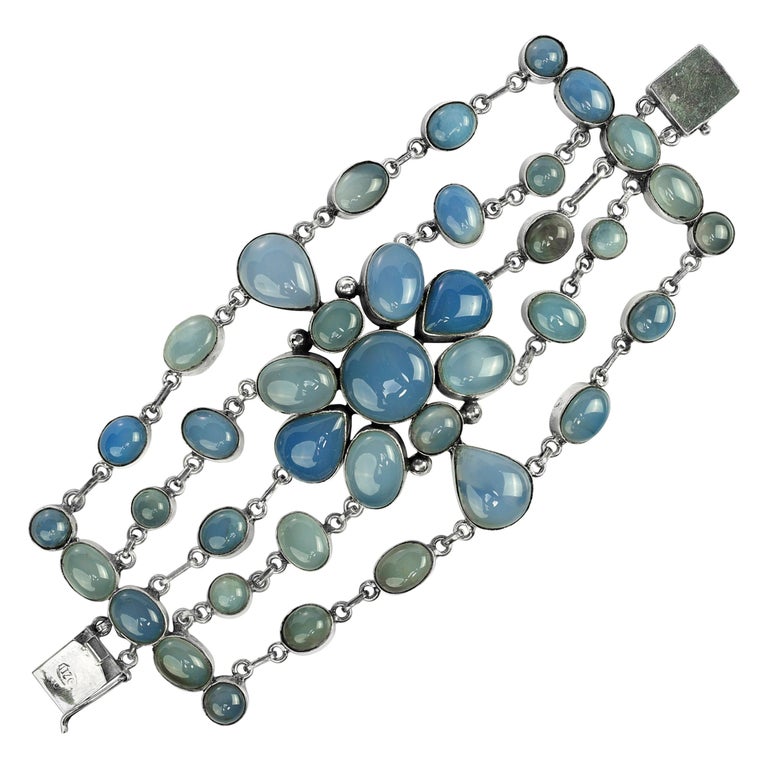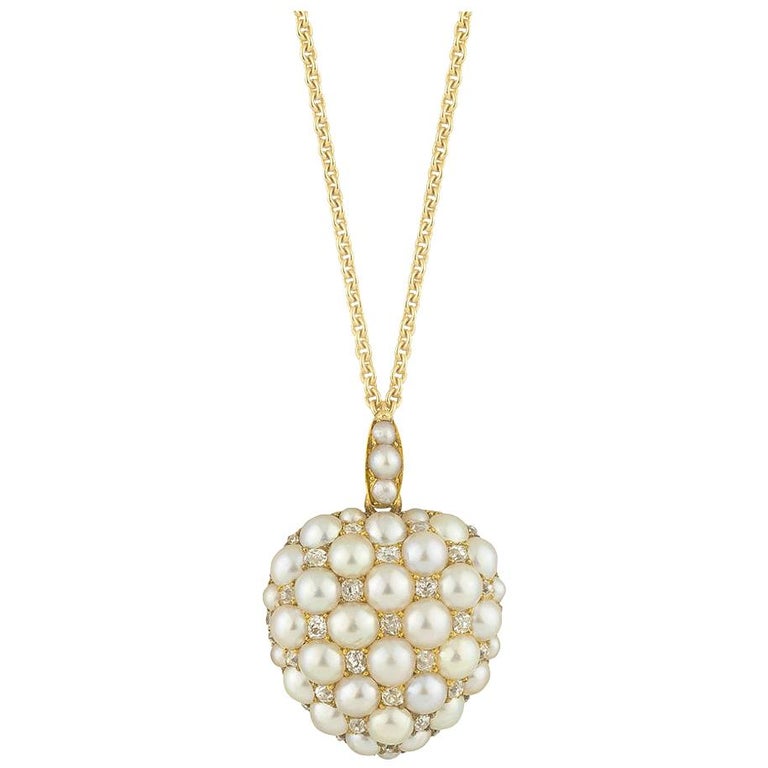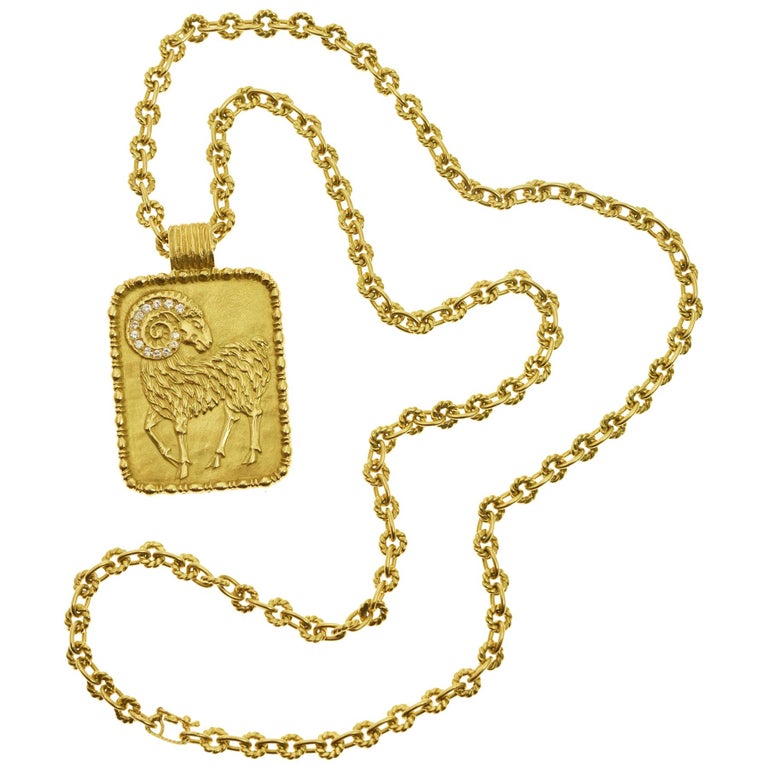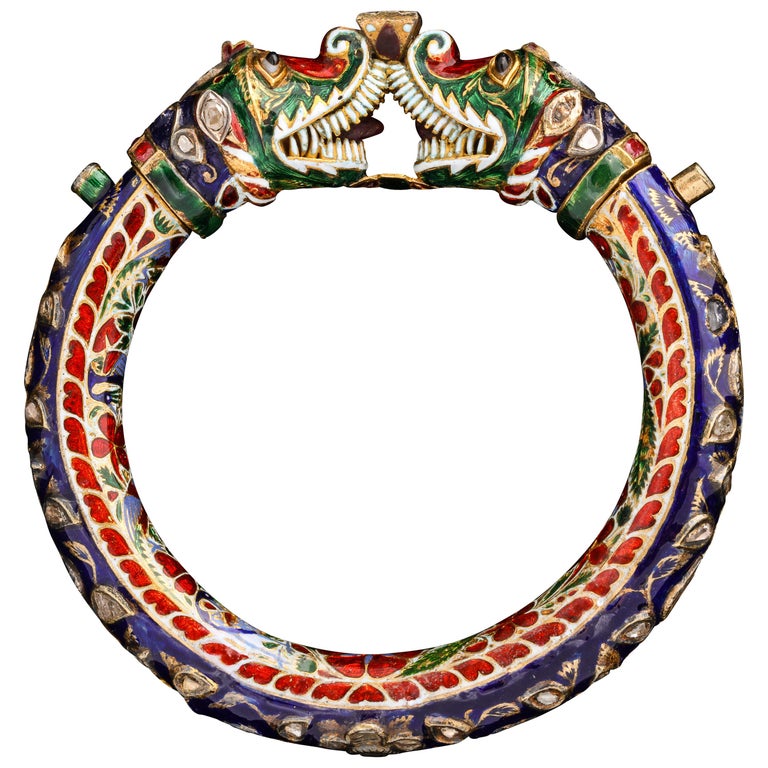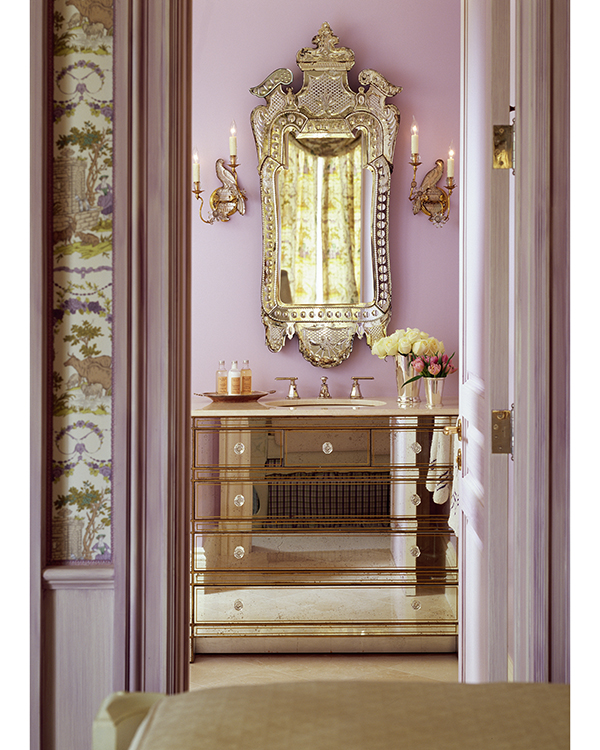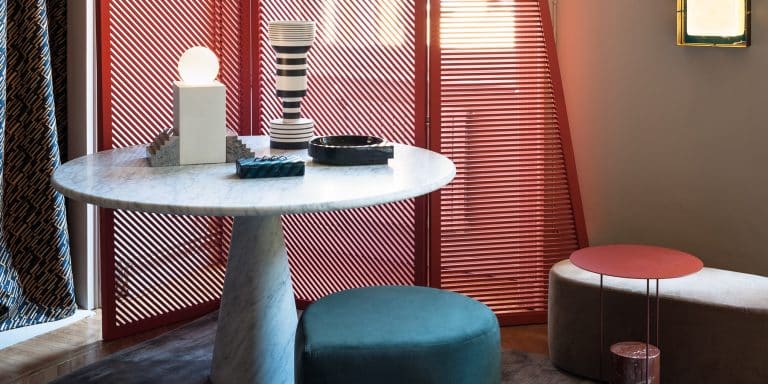November 29, 2020When you are sparkle-scrolling through 1stDibs, browsing for just the right vintage jewel, do you ever wonder about the places or people offering these treasures? Do you envision an old-world type of establishment — a shop handed down through generations? Well, often you’d be correct. Lots of vintage-jewelry firms are family businesses. One of the oldest such enterprises on 1stDibs, Joseph Saidian and Sons, can trace its history back to 1850.
But not all vintage dealers on 1stDibs are generational businesses. Some sellers were drawn to the field by their individual interests. Running with Scissors author Augusten Burroughs, for instance, channeled his passion for jewelry into a part-time profession last year with his exclusive-to-1stDibs shop, The Blue Paisley Fox.
Read on to find out more about five vintage-jewelry dealers, their most exceptional pieces and their holiday gift ideas.
Clockwise from top left: Van Cleef & Arpels pearl and diamond lion necklace, earrings and ring set, 1970s; Peter Skubic gold geometric ring, 1978; Cazzaniga ruby, sapphire, diamond, enamel and gold sautoir, ca. 1970; Black Starr and Frost pearl and diamond ring, ca. 1905; Buccellati diamond and gold bangle bracelet, 1960
Eleuteri
Established: 1897 • Dealer: Wagner Eleuteri
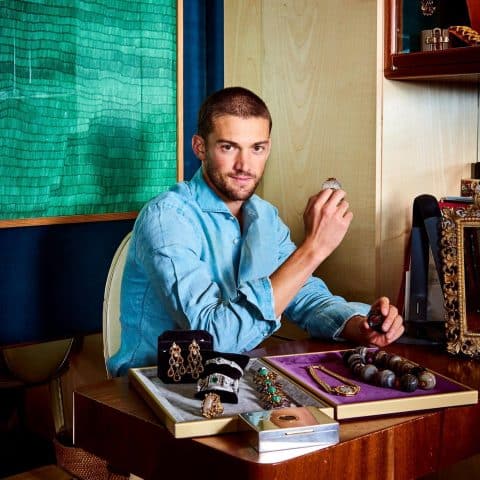
What attracted you to jewelry?
I was born into a jewelry dynasty, if you will. My maternal grandfather was the jeweler Erminio Rizzoli, known as Herriz, whose Venice boutique housed a magnificent collection of antique jewels and important gemstones. My father Carlo’s firm [Eleuteri] is recognized around the world as the go-to source for high-end vintage jewelry. Growing up, I spent a lot of time watching and learning from him in his flagship store in Rome and realized early on that I had an innate love for vintage jewels.
How do you describe your inventory?
We’ve always described our inventory as a Wunderkammer, or cabinet of curiosities, filled with precious treasures! The only criterion that applies to every single piece is that we must be drawn to it. That said, we specialize in twentieth-century Art Deco jewelry and exceptional Bulgari items from the nineteen forties through the nineteen eighties.
What is one of the most impressive jewels in your collection now?
We have an exquisite Bulgari necklace composed of fourteen oval and cushion-shaped cornflower-blue Burmese sapphires, pigeon’s-blood-red cabochon rubies and circular-cut diamonds. It is a marvelous example of iconic Bulgari design from the La Dolce Vita era, which many consider to have been Bulgari’s heyday. It was the nineteen sixties, and celebrities were flocking to Rome because of the famous film studio Cinecittà. They all fell in love with Bulgari, especially the bold color combinations and voluminous designs that characterized its jewels.
The Blue Paisley Fox
Established: 2019 • Dealer: Augusten Burroughs

What attracted you to jewelry?
I have collected jewelry since childhood. My grandparents were jade collectors, and it became one of my favorite gems. They were in love with the Gump’s store in San Francisco. Whatever horrible thing happened, their idea of a resolution was to get yourself something from Gump’s. I internalized that message of gifting, and it was almost always jewelry. All the jewelry I accumulated inspired me to launch the store. I thought, “Go retail, or be buried with it.”
How do you describe your inventory?
I like things that have a soul. They have something going on where you can feel the goldsmith’s fingertips right through the piece. I like gems that change. Diamonds have one trick: They sparkle. That’s cute, but chrysoberyl is dynamic. It is described as milk and honey. There is a cream- or milk-colored eye that slides through the honey.
What is one of the impressive jewels in your collection now?
I have this exceedingly rare and ravishing mid-century suite by Mario Buccellati. It displays the kind of craftsmanship that couldn’t be re-created today.
I also have an extraordinary nineteenth-century Kashmir sapphire ring. The gem never goes to sleep. The color is always there. Kashmir sapphires were found by accident in the Himalayan mountains at an elevation twenty-three hundred feet higher than any other sapphire had ever been found before.
Stephen Russell
Dealer: Russell Zelenetz • Established: 1984
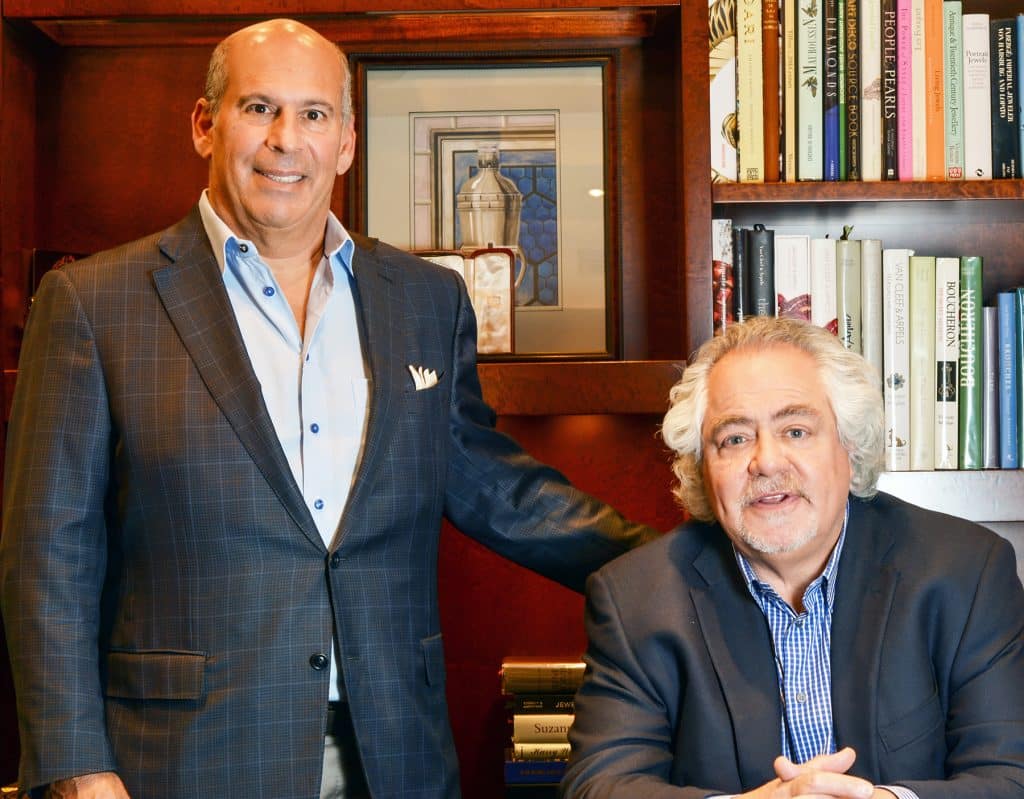
What attracted you to jewelry?
I actually had plans to be a dentist. But I had some time before attending dental school, so I began taking jewelry classes at the Fashion Institute of Technology. There were some amazing professors in the department, including Samuel Beizer, who worked with Elsa Peretti on developing her mesh collection, and Tiffany & Co. designer Donald Claflin, who made so many iconic jewels. I fell in love with jewelry immediately and never went to dental school. After a few years working in the jewelry business, I and my friend Stephen Feuerman, who had been working in the trade in London, launched Stephen Russell.
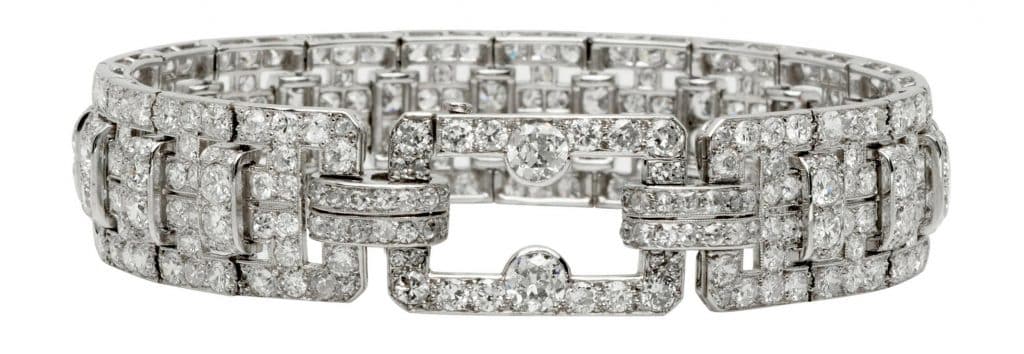
How do you describe your inventory?
Our collection spans four centuries, but we are known for our Art Deco jewelry. We like it because the designs are clean, and that makes them timeless. You don’t need to think about it too much to understand it. Art Deco is just there for you.
We also have several jewels that we make under our own label, such as platinum and collet-set diamond chains of various lengths. It was a move we made out of necessity, because there is a limited supply of proper period jewelry.
What is one of the most impressive jewels in your collection now?
Wow! That’s like asking who’s your favorite kid. We have quite a few things that are special, but the Tiffany & Co. ring set with a 7.31-carat Asscher-cut diamond that comes in the original box is exceptional. The gem could have been cut by the Asscher brothers themselves, and it comes from the period around 1915 when they invented it. Looking into the gem is like staring into an infinity mirror.
Mahnaz Collection
Dealer: Mahnaz Ispahani • Year established: 2012

What attracted you to jewelry?
Jewelry always stood out to me as an ancient and central artifact of all human cultures. I have lived, traveled and worked across continents, finding small, portable, sculptural objects along the way — in Russia, the former Yugoslavia, Brazil, Guatemala, Iran, India, Pakistan, Sri Lanka, Nigeria, Senegal, Mali. I have collected jewelry for the last fourteen years in the American Southwest as well, because of my lifelong appreciation of turquoise, which comes from my Persian heritage, and for the special peace I find in the beauty of the ancient, monumental landscapes of the region.
My family heritage includes the art, design and architecture of the Mughal, Persian and Western modernist worlds. My childhood home in Pakistan was designed by an Italian modernist at a time when Giò Ponti was working in the country. My mother herself was a refined modernist and gave me, first, a single-stone tiger’s-eye ring encased in gold when I was a preteen and, then, an Andrew Grima–designed Omega watch in the early nineteen seventies. I later collected antique Mughal-era kundan and meenakari jewelry. Finally, I am also a scholar and hold a Ph.D. in international relations and war studies, so I bring strong research skills to the study of the jewelry in our collection. We not only sell but also seek to educate the broader field of jewelry by formally exhibiting the jewelry and producing original scholarship in our accompanying catalogues.
How do you describe your inventory?
We carry jewelry from the mid-twentieth century onwards, specializing in the nineteen sixties and nineteen seventies, made by forward-looking independent jewelers whose work has stood the test of time. We also carry sophisticated, wearable design classics by heritage brands, particularly Hemmerle, and works by a few contemporary jewelers who share our values.
What is one of the most impressive jewels in your collection now?
The gold China Sea earrings with a fitted brass stand by the late British artist-jeweler Wendy Ramshaw are striking and collectible. The earrings move gently on the ear, look stunning when worn and focus your attention on the circle and the square, Ramshaw’s core obsessions. She was a true innovator and one of the first jewelers to experiment with the concept of jewelry as sculpture.
Joseph Saidian and Sons
Dealer: Ariel Saidian • Established: 1850
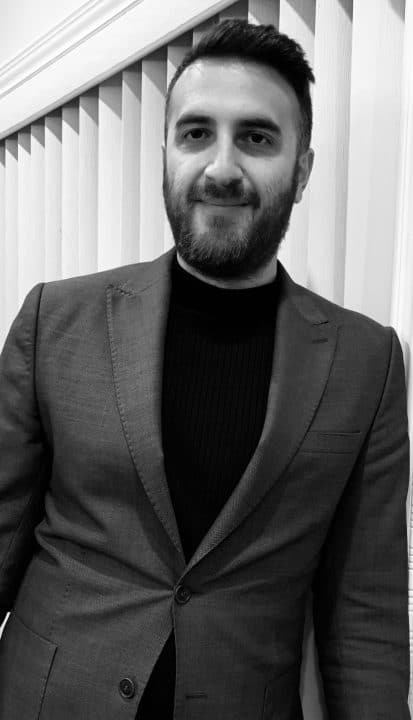
What attracted you to jewelry?
My grandfather, father and uncle were all in the business, and the company my grandfather established in Iran has roots going back to 1850. After brief forays in London, Israel and Geneva, the family moved the business to New York City in 1988. Jewelry is in my blood. A few of the many treasures that have passed through my family’s hands include the Westminster tiara and the Cartier Mughal emerald brooch, which is now part of the permanent collection of the Metropolitan Museum of Art. We produced a book with Rizzoli a couple of years ago, The History of Jewelry, that shows highlights of what we have handled, what we have and what we love.
How do you describe your inventory?
Our specialty is colorful twentieth-century signed jewelry. We specialize in Van Cleef & Arpels from all periods. My father once said, “Van Cleef & Arpels is the most important jewelry brand of all time,” and of course, I agree. Right now we have an amazing Zipper necklace. But we also have a lot of other areas of unexpected expertise, like Mughal jewelry and objects of virtue. The work put into all these jewels is astonishing. It’s not comparable to anything made today.
What is one of the most impressive jewels in your collection now.
We have this incredible David Webb jade, diamond and enamel necklace. It screams at the top of its lungs, “I was made by David Webb.”
